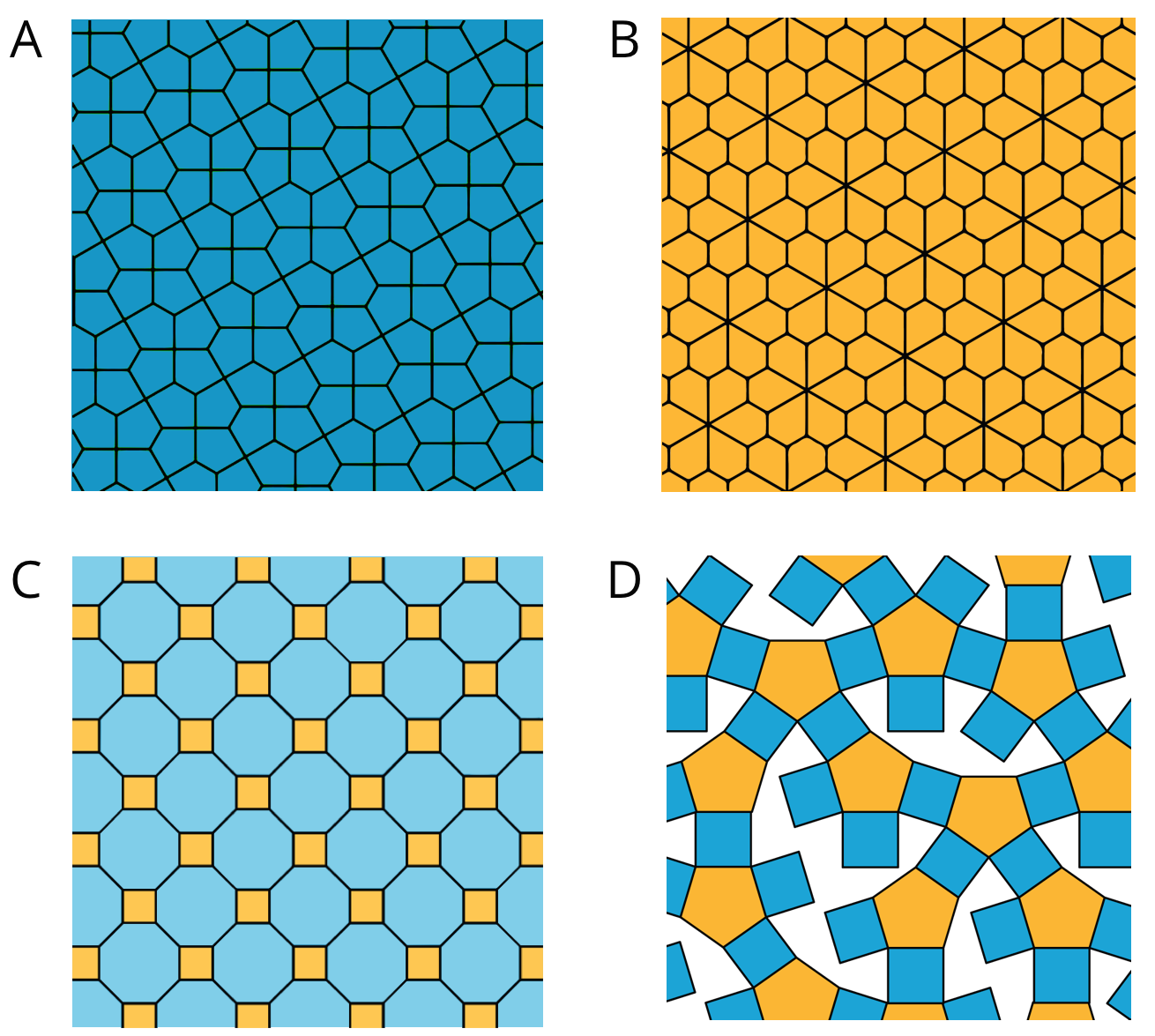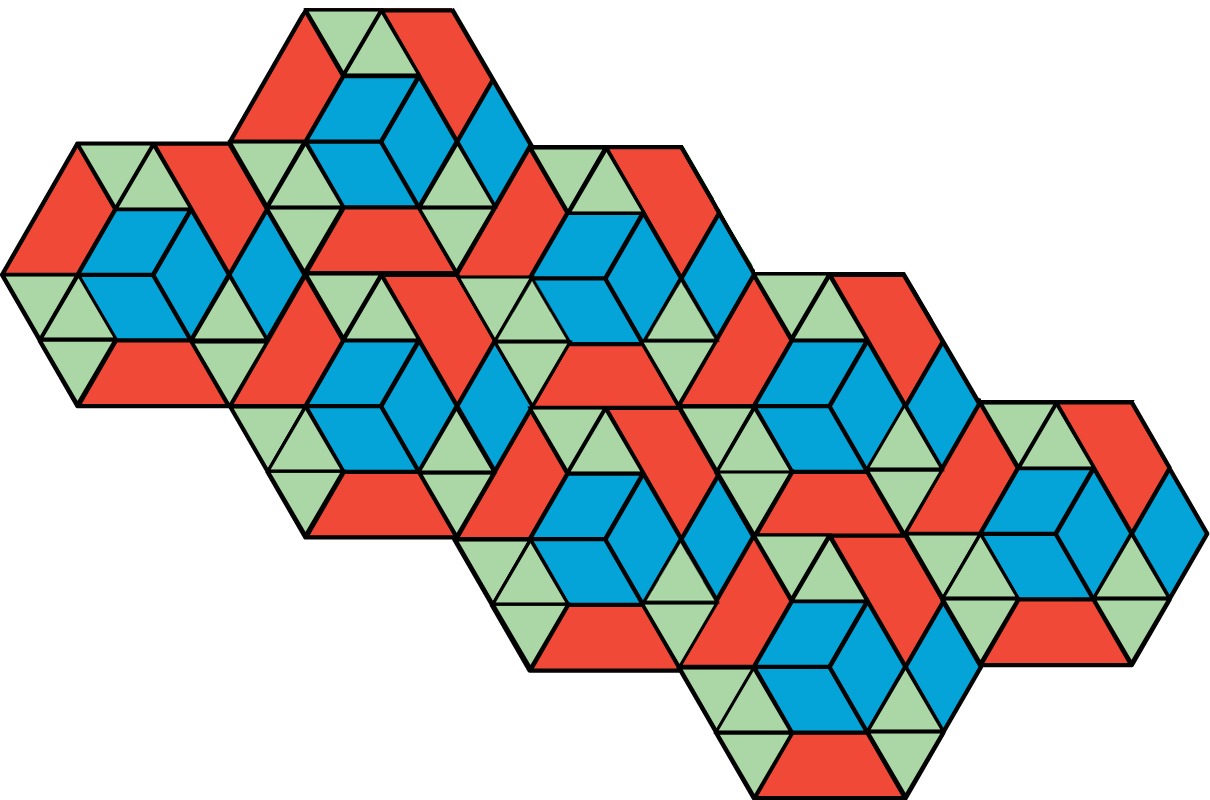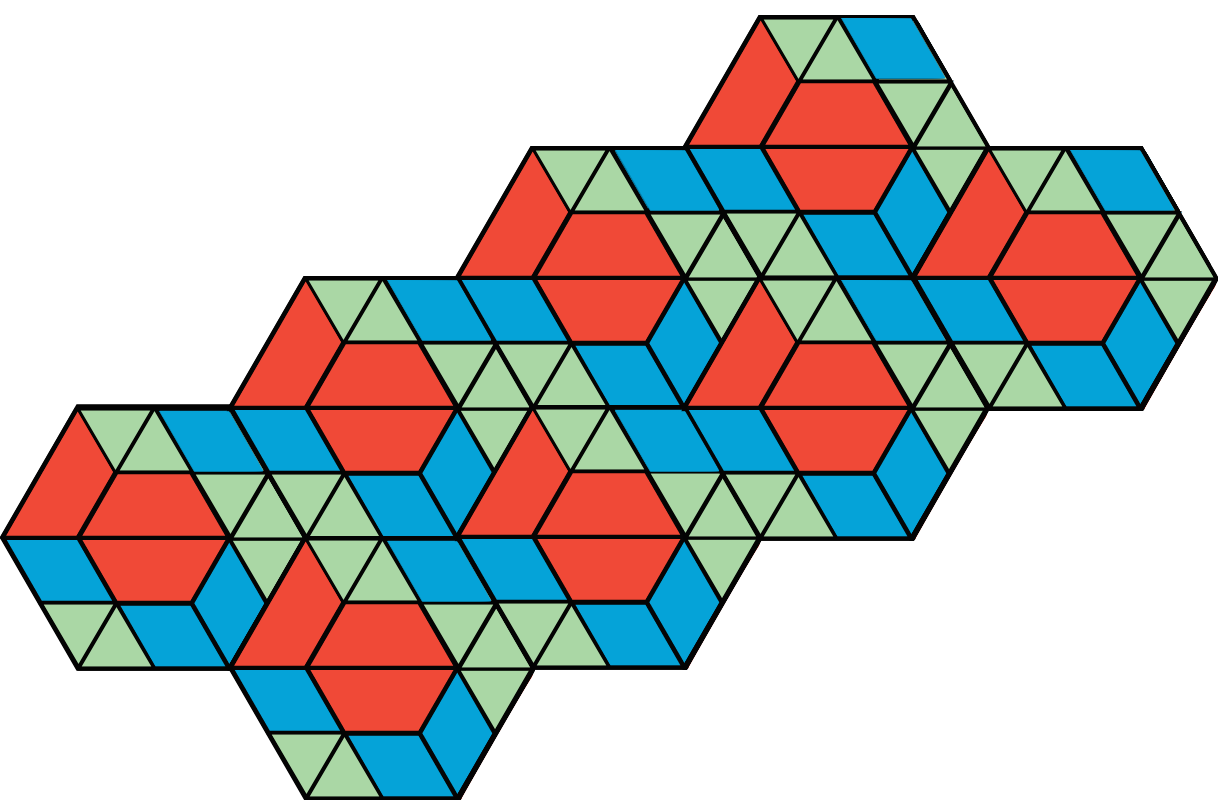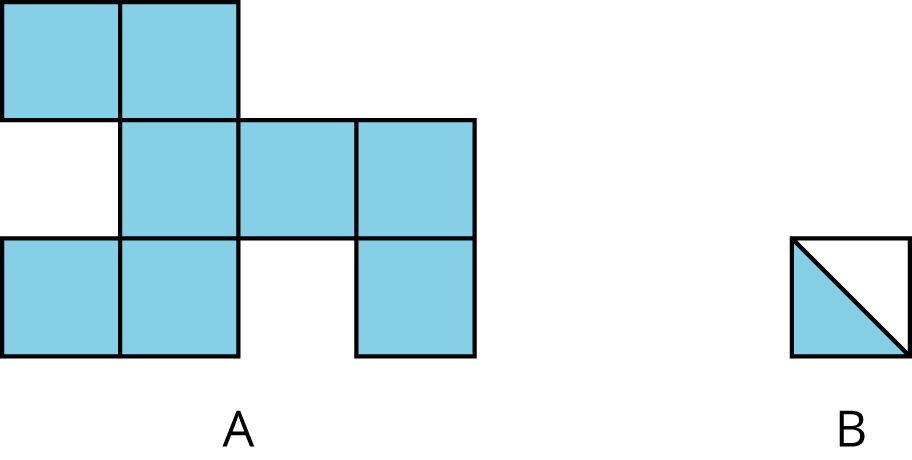1.1: Which One Doesn’t Belong: Tilings
Which pattern doesn’t belong?

Let’s look at tiling patterns and think about area.
Which pattern doesn’t belong?

Your teacher will assign you to look at Pattern A or B.
In your pattern, which shapes cover more of the plane: blue rhombuses, red trapezoids, or green triangles? Explain how you know.
Pattern A

Pattern B

You may use this applet to help. Explore what you can see or hide, and what you can move or turn.
On graph paper, create a tiling pattern so that:
In this lesson, we learned about tiling the plane, which means covering a two-dimensional region with copies of the same shape or shapes such that there are no gaps or overlaps.
Then, we compared tiling patterns and the shapes in them. In thinking about which patterns and shapes cover more of the plane, we have started to reason about area.
We will continue this work, and to learn how to use mathematical tools strategically to help us do mathematics.
The area of a two-dimensional region, measured in square units, is the number of unit squares that cover the region without gaps or overlaps.
The side length of each square is 1 centimeter. The area of the shaded region A is 8 square centimeters. The area of shaded region B is \frac12 square centimeters.

Examples of two-dimensional regions include the interior of a circle or the interior of a polygon.
Here are two examples of two-dimensional regions. Area is a measure of two-dimensional regions.

Examples of a three-dimensional region include the interior of a sphere or the interior of a cube.